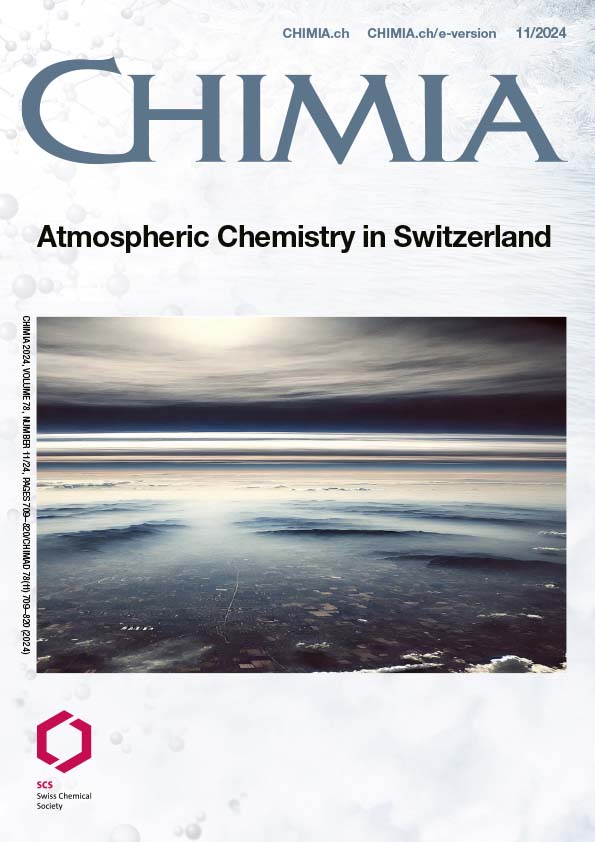Ammonia Emissions from Swiss Agriculture and their Effects on Atmospheric Chemistry and Ecosystems
DOI:
https://doi.org/10.2533/chimia.2024.771PMID:
39618279Keywords:
Ammonia, Critical loads, Dry and wet deposition, Emission, Secondary inorganic aerosolsAbstract
Ammonia (NH3) is an important atmospheric pollutant due to its contribution to secondary inorganic aerosol formation and its deposition and impacts on (semi-)natural ecosystems. Therefore various efforts have been made to limit emissions to the atmosphere. The predominant emission source in Switzerland is livestock agriculture, wherein NH3 is volatilised from ammonium contained in animal manure. While modelled NH3 emissions based on agricultural activity data indicate a minor decrease since 2000, concentration measurements do not reflect this trend. This can at least partly be attributed to a decline in the transformation of NH3 to particulate ammonium due to significantly decreased emission of oxidised nitrogen and sulfur compounds in the past decade. The partitioning between the gaseous and the particulate phase also determines the deposition pathway (dry or wet deposition) and thus the average lifetime and transport distance in the atmosphere. Gaseous NH3 is subject to fast dry deposition and is deposited preferentially to ecosystems close to the source. Once deposited into an ecosystem, NH3 leads to eutrophication and acidification of water and soils, which change the plant community composition and microbial functioning, especially in N-sensitive ecosystems. Although NH3 can also cause direct toxicity to plants, assessments of ecosystem impacts are generally collated using the critical load approach, which includes the input of all N compounds. These reveal that in 2020, 87% of forests, 94% of raised bogs, 74% of fens, and 42% of dry mountain grasslands likely experienced adverse impacts from N exceedances in Switzerland. To improve this situation, considerable NH3 emission abatement efforts are needed in the future.
Downloads
Published
Issue
Section
License
Copyright (c) 2024 Christof Ammann, Alex Valach

This work is licensed under a Creative Commons Attribution 4.0 International License.







